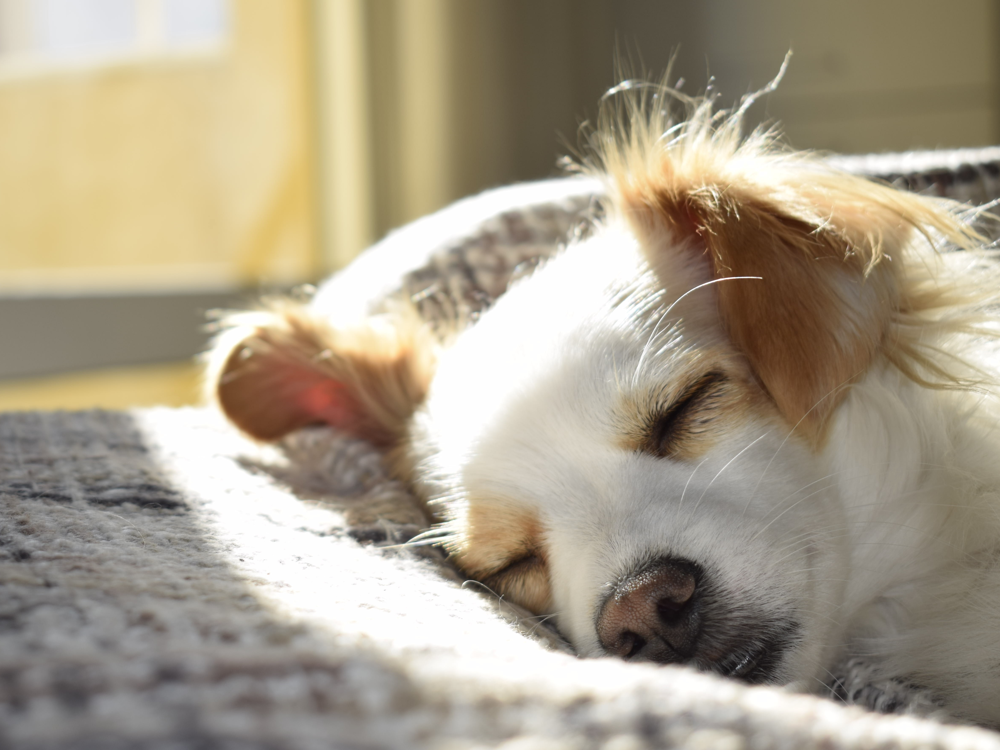How to Remove Plaque from Your Dog’s Teeth
Share
[Sassy_Social_Share]A build-up of plaque on your dog’s teeth can do worse than give them stinky breath. Dental hygiene is important for your dog’s overall health and well-being. If left unchecked, plaque on your dog’ teeth will develop into tartar. This can cause pain, gum disease, tooth loss, infections, abscesses and even heart disease. Dental pain can make it hard for your dog to eat. So we owe it to our best friends to help them keep their teeth clean and healthy.

A young dog will usually have clean, shiny teeth. When rescues take in a dog that has been stray, the dog’s teeth are an important clue to determining their age. We don’t always notice plaque building up until it is pretty advanced and a dog is perhaps six or seven. But the reality is that the majority of dogs will have too much plaque on their teeth by the time they are three years old. According to the American Veterinary Dental College, most dogs actually have symptoms of periodontal disease by the age of three. It’s never too early to start looking after your dog’s teeth, but most of us owners leave it until we notice a problem. Then we are wondering how to remove plaque from a dog’s teeth rather than how to prevent it.
How to Remove Plaque from Dog’s Teeth
The best way to remove plaque from your dog’s teeth at home is to brush them. Pet stores carry specially designed dog toothbrushes and dog toothpaste. Regular toothbrushes are not always sturdy enough for dogs, and toothpaste made for humans can be dangerous. Xylitol is toxic for dogs. Brushing your dog’s teeth once will not remove a build-up of plaque, but if there isn’t too much, regular brushing can eventually get your dog’s teeth nice and clean.
Some dogs, particularly small or older dogs, really struggle with a toothbrush. Make sure the dog toothbrush you chose is the right size for your dog’s mouth. Dog toothpastes come in meaty flavours to appeal to our canine friends. But if that isn’t enough to encourage your dog to let your brush their teeth, you can try a special type of dog toothbrush that fits over your finger or a piece of course gauze.
In some cases, it isn’t possible to remove all the plaque from your dog’s teeth. If your dog’s teeth have a bad build-up of tartar, it is best to bring them to the vet for a professional cleaning. The vet will usually put a dog under general anaesthesia for this. Once your dog’s teeth are nice and clean again, you can start cleaning them at home regularly to prevent another significant build-up.
Does Chewing Clean Dog’s Teeth?
Chewing toys and treats can help prevent plaque from building up on your dog’s teeth, although it is not enough to remove built-up tartar. But a variety of chew toys and dental treats are part of a good oral health strategy for your dog. Best of all – dogs love them!
- Dental Treats – Pet stores carry a range of treats specially designed to remove plaque from dog’s teeth. Look for ones with wholesome, natural ingredients such as Leader Oral Pro Dental Sticks. If your dog is on a grain-free diet, try the Go Native Dental Super Sticks. Treats like these not only help keep teeth clean, they freshen your dog’s breath too.
- Rawhide – Not all rawhide treats are created equal! Rolled sheets of rawhide are not great for enthusiastic chewers because they can swallow large pieces. Some rawhide treats are dyed bright colours to appeal to dog owners. Your dog doesn’t care, and some of them can stain your furniture or carpet. But the right rawhide chew can help control plaque.
- Rope – A quality rope toy can give your dog great fun for years while also cleaning their teeth, although a cheap one won’t last long. It is important to supervise your dog when they have a rope toy because if those sharp teeth cut through the strands and start to unravel the toy, they are at risk of swallowing some it. That can lead to a dangerous intestinal blockage.
- Rubber – Chewing sturdy rubber toys, especially those with some texture, also help keep your dog’s teeth clean. The most important thing is to find one that is safe for your dog. It should be too large for your dog to swallow and sturdy enough that your dog can’t chew pieces off. Some, such as Kong, can be stuffed with treats – or even a bit of dog toothpaste.
Not everything marketed as a dog chew toy is safe or good for their teeth. Beware of flimsy toys. Dogs can rip pieces off and swallow them. Very hard bones and even pig’s ears can splinter, meaning your dog could swallow a sharp fragment. They could also chip a dog’s tooth, especially if your dog is older.
Healthy Teeth, Healthy Dog
Your dog’s dental health is critical to their overall wellbeing. If you don’t know how to remove plaque from a dog’s teeth, they are at risk of developing periodontal disease. Dental pain is miserable, and sore teeth can put a dog off their food. If your dog does not enjoy eating and chewing, that is a serious blow to their quality of life.
The good news is that it isn’t that hard to remove plaque from a dog’s teeth, and you can prevent it from building up in the first place. Regular home dental care such as daily or weekly tooth brushing and healthy chewing options are easy ways to keep your dog’s teeth clean and healthy. They might not enjoy the brushing, but they will love the dental treats and chewing toys!







